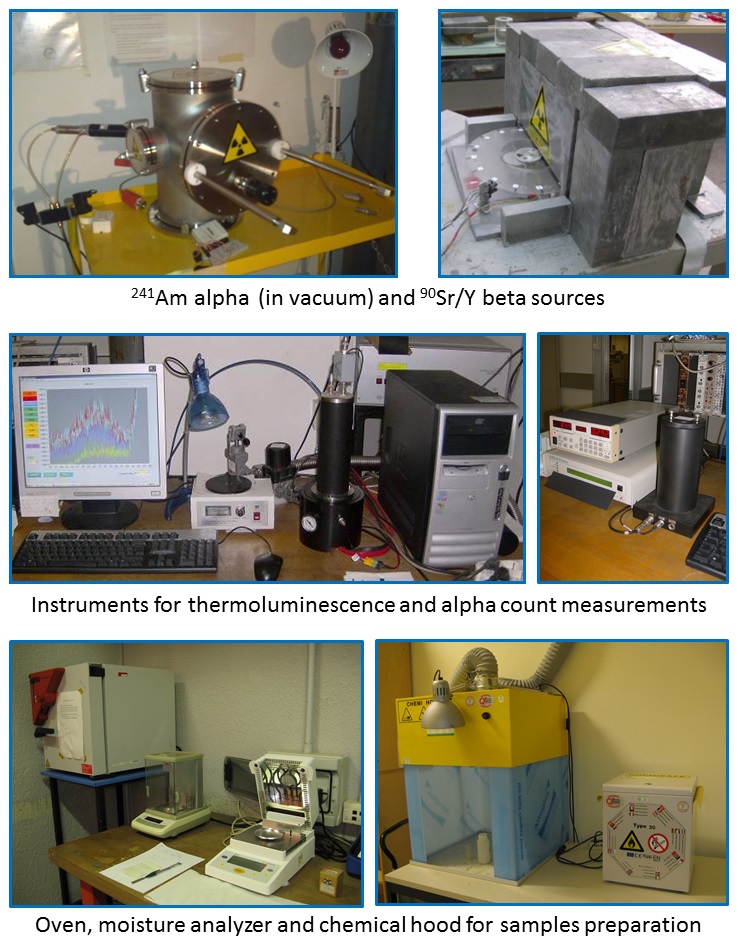Thermoluminescence Dating Laboratory

At now fine grains method is applied in our laboratory, but in future also the quartz inclusion grains procedure will be implemented. After an experimental comparison between chemical preparations of the samples reported in literature, the procedure described in [1] was adopted, being the one that gave the best results on objects of known age even if the material is of poor quality.
Palaeodose is the sum of two terms: the equivalent dose and the supralinearity. In our laboratory the equivalent dose is determined using the additive dose method for multiple aliquots; a calibrated radioactive 90Sr/Y beta source is used to supply the artificial dose. After irradiation, a pre-heating is performed in oven at 150 °C for 180 s to reduce the contribution of the TL signal coming from unstable traps. All TL measurements are carried out by means of a TL2000-Ipses reader in nitrogen atmosphere using a 10 °C/s heating rate. In order to measure the supralinearity, a second analysis is carried out after removing natural TL by means of a heating (four hours at 450 °C). Finally the anomalous fading is estimated storing irradiated samples in dark at room temperature for few months and comparing the TL signal with the signal of samples immediately after irradiation.
The annual dose can be calculated as the sum of contributions to the dose from alpha, beta and gamma particles generated during radioactive decays. Different approaches are used depending on the uncertainty required in the calculation of the age. In first instance, alpha decay counting measurements by means of a CALPH-Ipses apparatus is used to calculate the contribution to the annual dose from uranium and thorium decay chains. In this case 40-potassium amount is measured by means of ICP (Inductively Coupled Plasma). Otherwise, for greater accuracy and according to the availability of the material, a measurement by means of gamma spectroscopy (HPGe-ORTEC detector) can be performed. Using gamma spectroscopy it is also possible an estimation of the radon loss. In all cases the efficiency of the alpha particles compared to beta particles in producing a TL signal is calculated comparing the measured equivalent dose values obtained respectively by means of alpha (241Am source in vacuum) and beta particle artificial irradiations. Moreover environmental dosimeters are placed in archaeological site for few months in place of the sample obtained by means of coring. Finally, the annual dose contributions is corrected for the material porosity responsible for the water absorption, by means a moisture analyzer.